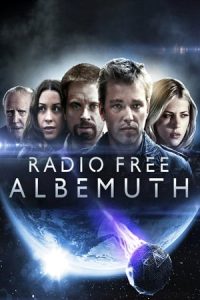- Source: Hokuriku Broadcasting Company
Hokuriku Broadcasting Co., Ltd. (北陸放送株式会社, Hokuriku Hōsō Kabushiki-gaisha), also known as MRO, is a Japanese broadcast network affiliated with the Japan News Network (JNN). Their headquarters is located in Ishikawa Prefecture.
The "MRO" abbreviation is taken from the last letters of the call signs "JOMR" and "JOMO" of the Kanazawa and Nanao broadcasting stations, respectively. JOMO is no longer operational.
MRO functions as the default Japan News Network affiliate for the Fukui Prefecture, as that area doesn't have a JNN affiliate of its own.
Network
TV: Japan News Network (JNN)
RADIO: Japan Radio Network (JRN), National Radio Network (NRN)
History
= Early history
=On December 24, 1948, the Ishikawa Prefectural government applied for a license to operate a commercial broadcaster under the name Hokuriku Cultural Broadcasting, and was the fourth Japanese company to apply to operate a commercial broadcaster. This application was later rejected due to Supreme Commander for the Allied Powers' media censorship.: 6
After the establishment of the "Three Radio Laws" (Radio Law, Broadcasting Law, and Radio Supervisory Committee Establishment Law) in 1950, multiple license to operate a commercial broadcasting applications appear in various parts of Japan. The local newspaper Hokkoku Shimbun in Ishikawa Prefecture revived its plans to operate a new broadcaster.: 4–5 On February 10, 1951, Hokkoku Shimbun took the lead and the founders meeting were held.: 7 In April 21 of the same year, the Ministry of Posts granted 16 of the broadcast licenses and Hokuriku Cultural Broadcasting was listed. However, the broadcast area is limited to Ishikawa Prefecture, and does not include Toyama and Fukui prefectures, which are within the scope of the application.: 9
= Start as radio broadcaster
=Two test radio broadcasts were launched: on April 22, 1952, at 9 am: 21 and on May 1 of the same year.: 22 At 6 am on May 10, 1952, Hokuriku Cultural Broadcasting was officially launched, becoming the first commercial radio broadcaster along the Sea of Japan.: 4 The broadcaster was initially located in the 4th floor of the Marukoshi Department Store in Kanazawa City.: 26–27
On November 28, 1956, Hokuriku Culture Broadcasting changed its company name to Hokuriku Broadcasting.: 36 In order to strengthen the advertising business, Hokuriku Broadcasting, together with Kita Nippon Broadcasting and Fukui Broadcasting , formed the "Hokuriku Radio Alliance" on February 1, 1953, to increase income and reduce expenditure.: 40–41 Hokuriku Broadcasting achieved uninterrupted broadcasting throughout the day on May 1 of the same year, and achieved profit for the first time in June.: 44 In February 1954, Hokuriku Broadcasting realized its first stock dividend.: 47 At the end of 1955, Hokuriku Broadcasting set up a relay station in Nanao at the northern end of the Noto Peninsula, covering most of Ishikawa Prefecture.: 53–54 According to the first listening rate survey in November 1955, the listening rate of Hokuriku Broadcasting reached 56.8%, far exceeding the 39.3% of the first frequency of NHK broadcasting.: 55 Hokuriku Broadcasting changed the abbreviation from MR to MRO on January 1, 1956 (O is taken from the call sign JOMO of Nanao Broadcasting Bureau), and formulated a new trademark.: 56 On April 1 of the same year, Hokuriku Broadcasting began construction of a new headquarters in Takaoka-cho (now Korinbo), Kanazawa City.: 58 The building has five floors above ground and one floor underground, and was completed on December 7 of the same year.: 58
= Jump to television
=Hokuriku Broadcasting applied for a TV broadcasting license on August 31, 1953.: 45 On October 22, 1957, Hokuriku Broadcasting obtained a TV pre-broadcast license.: 69 At 8:10 p.m. on November 6 of the following year, Hokuriku Broadcasting launched a TV test signal.: 74 On November 15, Hokuriku Broadcasting obtained the official TV broadcasting license.: 74 At 18:00 on November 17, Hokuriku Broadcasting began to broadcast TV programs.: 77–78
At 11 a.m. on December 1, 1958, Hokuriku Broadcasting officially began broadcasting TV programs, becoming the first commercial TV station on the coast of the Sea of Japan in Honshu.: 79 Shortly after Hokuriku Broadcasting started, TV began to spread rapidly due to the wedding of Crown Prince Akihito.: 82 In December 1960, the TV penetration rate in Ishikawa Prefecture reached 34.6%.: 95 At the same time, according to the first ratings survey in May 1959, the average weekly ratings of Hokuriku Broadcasting reached 40.1%, surpassing the 34.1% of NHK General Television.: 83 At the same time as JNN was established, Hokuriku Broadcasting also became a founding member of JNN in August 1959.: 318 On August 2, 1960, the Hokuriku Broadcasting Union was established.: 96 Beginning in April 1962, Hokuriku Broadcasting began broadcasting educational programs for schoolchildren every Monday to Saturday morning.: 110–111 On July 22 of the same year, Hokuriku Broadcasting began broadcasting color TV.: 116–117 With the Nanao Broadcasting Bureau starting to broadcast TV signals in October 1962, the TV signals of Hokuriku Broadcasting were able to cover most of Ishikawa Prefecture.: 117
The broadcast division of Hokuriku Broadcasting joined JRN in May 1965.: 143–144 In the mid-1960s, in response to the advertising competition plan caused by the opening of the new UHF station, Hokuriku Broadcasting and Kitanihon Broadcasting jointly proposed to the Hokuriku Radio Supervision Bureau in 1966 that the three prefectures of Hokuriku should be used as the same TV broadcasting area to expand the advertising market, but this idea failed to come true.: 150–151 To celebrate the 15th anniversary of its founding, Hokuriku Broadcasting published "Ishikawa Prefecture Folklore": 165 in 1967, which included 484 ballads. In September 1967, Hokuriku Broadcasting began to build its third-generation headquarters Hokuriku Broadcasting Hall.: 166–167 In October of the following year, Hokuriku Broadcasting began to broadcast programs from the Hokuriku Broadcasting Hall.: 166–167 In August 1976, Hokuriku Broadcasting and Buffalo's WBEN-TV (now WIVB-TV) signed a sister station agreement.: 260–262
In July 1997, Hokuriku Broadcasting was exposed to the problem of fewer advertisements. In the five years since 1992, Hokuriku broadcast less than 2,659 advertisements of 181 companies that should have been broadcast; this incident led to Hokuriku Broadcasting being suspended by the Japanese private broadcasting union for one year . On July 1, 2006, Hokuriku Broadcasting began to broadcast digital TV signals. Hokuriku Broadcasting completely stopped broadcasting analog TV signals on July 24, 2011. On January 10, 2018, because the signal tower shared by Hokuriku Broadcasting and Ishikawa TV caught fire due to a lightning strike, the Kaga area and other places could not watch the programs of Hokuriku Broadcasting. Hokuriku Broadcasting set up a temporary antenna on January 18 to broadcast TV signals. On August 1 of the same year, the signal tower was completely repaired.
Station list
= Analog Television
=Kanazawa JOMR-TV 6ch
Wajima 10ch
Nanao 11ch
Suzu 6ch
Monzen 11ch
Yamanaka 12ch
Machino 6ch
Yanagida 12ch
Noto 6ch
Hakui 50ch
Togi 5ch
= Digital Television(ID:6)
=Kanazawa 14ch
Nanao 20ch
= RADIO
=Kanazawa JOMR 1107 kHz; 94.0 MHz FM
Nanao 1107 kHz; 88.6 MHz FM
Wajima 1107 kHz; 77.1 MHz FM
Yamanaka 1485 kHz
Program
TV
Reosta (レオスタ)
Zekkocho W (絶好調W)etc ...
RADIO
Oine Doine (おいね★どいね)
Twin Wave (ツインウェーブ) etc ...
Rival Stations
Ishikawa TV(ITC)
TVkanazawa(KTK)
Hokuriku Asahi Broadcasting(HAB)
References
External links
MRO WEB (MRO Official Homepage)
Kata Kunci Pencarian:
- TV Kanazawa
- Daftar perusahaan di Jepang
- Hokuriku Broadcasting Company
- MRO
- Hokuriku Asahi Broadcasting
- Kitanihon Broadcasting
- Ishikawa TV
- List of Aikatsu! episodes
- TV Kanazawa
- Japan News Network
- The Yomiuri Shimbun Holdings
- ALO's Hokuriku
Radio Free Albemuth (2010)
Pirates of the Caribbean: Dead Man’s Chest (2006)
Parasite (2019)
Unsung Hero (2024)
No More Posts Available.
No more pages to load.














